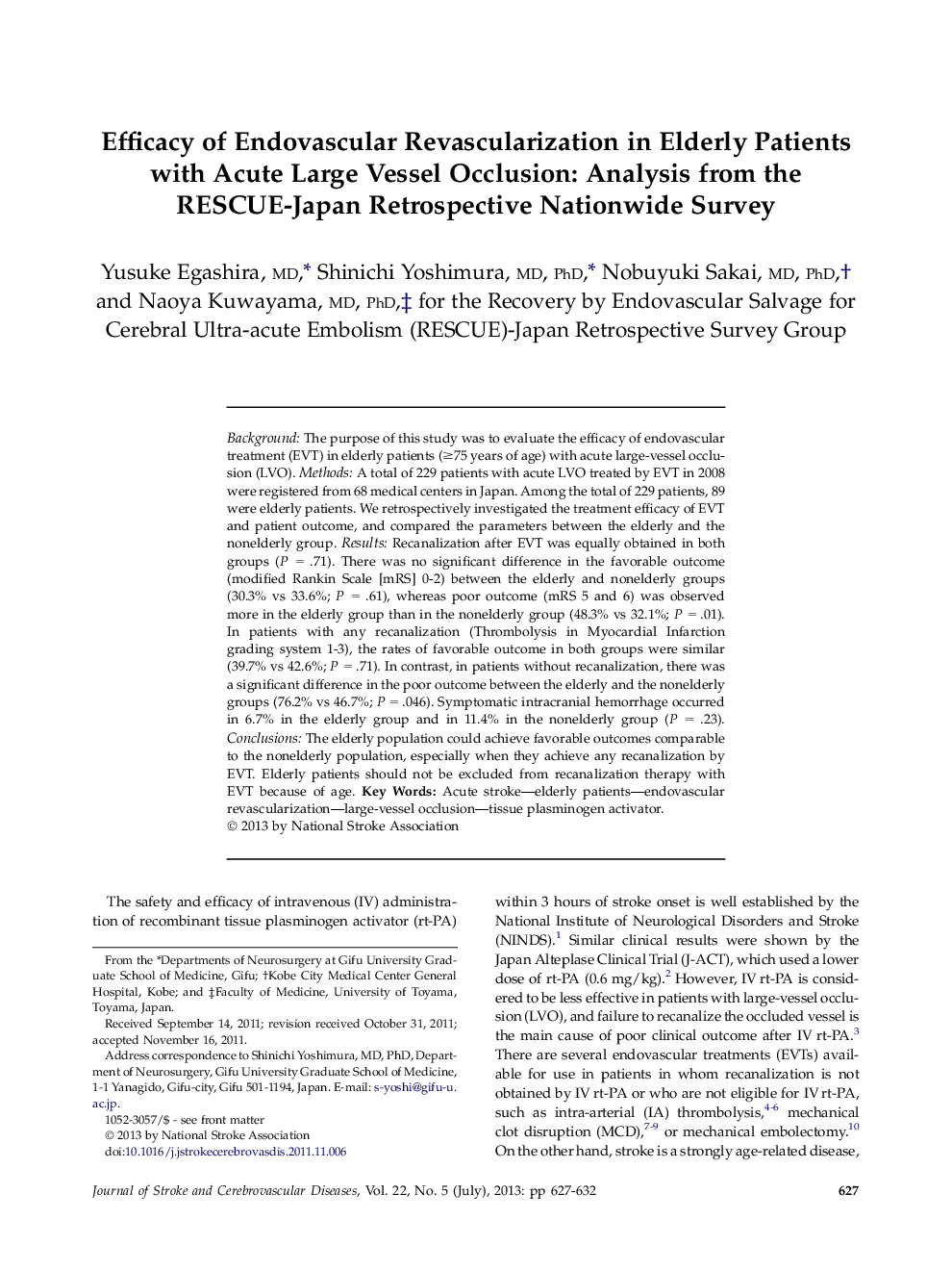| Article ID | Journal | Published Year | Pages | File Type |
|---|---|---|---|---|
| 2701954 | Journal of Stroke and Cerebrovascular Diseases | 2013 | 6 Pages |
BackgroundThe purpose of this study was to evaluate the efficacy of endovascular treatment (EVT) in elderly patients (≥75 years of age) with acute large-vessel occlusion (LVO).MethodsA total of 229 patients with acute LVO treated by EVT in 2008 were registered from 68 medical centers in Japan. Among the total of 229 patients, 89 were elderly patients. We retrospectively investigated the treatment efficacy of EVT and patient outcome, and compared the parameters between the elderly and the nonelderly group.ResultsRecanalization after EVT was equally obtained in both groups (P = .71). There was no significant difference in the favorable outcome (modified Rankin Scale [mRS] 0-2) between the elderly and nonelderly groups (30.3% vs 33.6%; P = .61), whereas poor outcome (mRS 5 and 6) was observed more in the elderly group than in the nonelderly group (48.3% vs 32.1%; P = .01). In patients with any recanalization (Thrombolysis in Myocardial Infarction grading system 1-3), the rates of favorable outcome in both groups were similar (39.7% vs 42.6%; P = .71). In contrast, in patients without recanalization, there was a significant difference in the poor outcome between the elderly and the nonelderly groups (76.2% vs 46.7%; P = .046). Symptomatic intracranial hemorrhage occurred in 6.7% in the elderly group and in 11.4% in the nonelderly group (P = .23).ConclusionsThe elderly population could achieve favorable outcomes comparable to the nonelderly population, especially when they achieve any recanalization by EVT. Elderly patients should not be excluded from recanalization therapy with EVT because of age.
